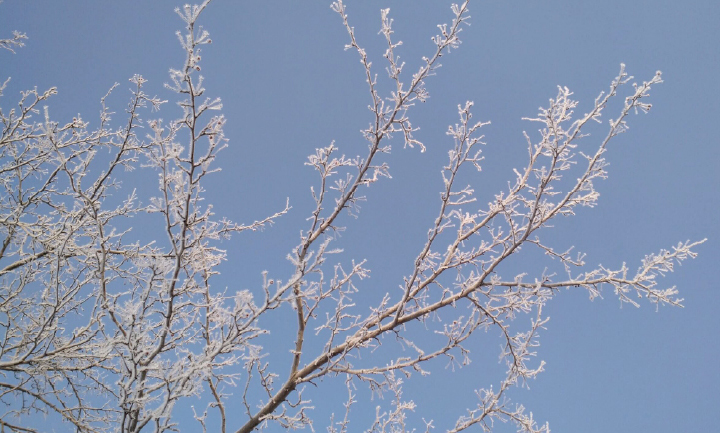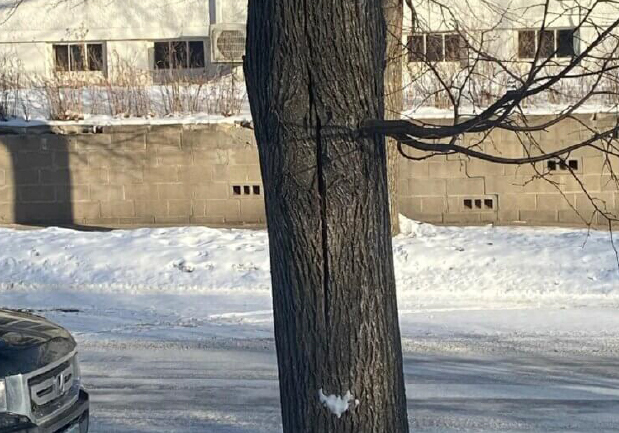
Here in the frozen North, we pride ourselves on our hardiness and ability to embrace the winter. Whether indoors or out, we have all developed adaptations that help us get through the cold and dark. Our native trees and shrubs are no different, having evolved over tens of thousands of years to survive in this sometimes-harsh environment. Unfortunately, the same can’t always be said for some of the non-native plants we humans have introduced to Minnesota.
If you were willing to brave the cold earlier this month and went for a walk in the woods, you may have heard what you thought was the crack of a rifle going off. More than likely you were in a place where shooting is illegal, which then begs the question: what was that sound? When frost cracks open on particularly cold days, they can do so with a bang. Even if you weren’t around to hear it, you may have noticed cracks opening on the trunks of trees. Some trees are more susceptible than others; frost cracks are most common on non-native linden species and certain maple cultivated varieties.

How frost cracks form is often misunderstood, so here’s a step-by-step:
While frost cracks can be dramatic if you notice a “new” crack on your tree, it’s important not to panic. Although the cracks may have appeared suddenly, they’ve often been present for decades, opening when conditions are right. Trees have developed means of dealing with wounds, and the cracks are not necessarily a structural risk. There’s generally not anything we can do to address the crack directly, but steps to improve the tree’s overall vigor can help the tree help itself. If you are concerned about your tree, contact an ISA Certified Arborist or ISA Board Certified Master Arborist and have them assess the crack and the tree’s condition.
From questions to estimate requests, contact us about your residential or commercial project.